#Medical Council of India
Explore tagged Tumblr posts
Text
How to Work as a Nurse in the Intensive Care Unit (ICU)
Becoming a nurse in the Intensive Care Unit (ICU) is not just a career choice; it is a calling. Where healthcare infrastructure is rapidly evolving, ICU nurses are the backbone of critical care services. These professionals are entrusted with saving lives, often under intense pressure, and their expertise plays a pivotal role in the recovery of critically ill patients. If you are passionate about…
#Cardiac#Care#Career opportunities#Critical Care#Demand#Diploma#education#Emergency#emotional support#Experience#growth#healthcare#healthcare professionals#India#Indian Nursing Council#Individual#medication#Medications#Monitoring#nursing#Nursing Care#Nursing Career#opportunities#Patients#Postgraduate#Qualifications#RN#skills#Support#training
0 notes
Text
1 note
·
View note
Text
இந்திய சட்டங்கள் மற்றும் இந்தியாவில் சட்டப்பூர்வ தீர்வுகள்
இந்தியா வளமான கலாச்சார பாரம்பரியம் கொண்ட பல்வேறு நாடு. இந்திய சட்ட அமைப்பு உலகின் பழமையான சட்ட அமைப்புகளில் ஒன்றாகும், மேலும் இது பல ஆண்டுகளாக உருவாகி வருகிறது. குடிமக்களின் உரிமைகளைப் பாதுகாக்கவும் நீதியை உறுதிப்படுத்தவும் இந்தியாவில் பல்வேறு சட்டங்கள் மற்றும் சட்டப் பரிகாரங்கள் உள்ளன. இந்திய சட்டங்கள் இந்திய சட்ட அமைப்பு இந்தியாவில் வாழ்க்கையின் பல்வேறு அம்சங்களை ஒழுங்குபடுத்துவதற்கும்…

View On WordPress
#The Acquired Territories (Merger) Act 1960#The Additional Duties Of Excise (Textiles And Textile Articles) Act 1978#The Administration of Evacuee Property (Central) Rules1950#The Administration of Evacuee Property Act 1950#The Advocates Welfare Fund Act 2001#The African Development bank Act 1983 The Banking Regulation Act 1949#The Agricultural And Processed Food Products Export Development Authority Act 1985#The Agriculturists Loans Act 1884#The Airports Economic Regulatory Authority Of India Act 2008#The All India Council For Technical Education 1987#The All India Institute Of Medical Science Act 1956#The Anand Marriage Act 1909#The Ancient Monuments and Archaeological Sites and Remains Act 1958#The Ancient Monuments Preservation Act 1904#The Anti-Hijacking Act 1982#The Antiquities and Art Treasures Act 1972#The Architects Act 1972#The Arms Act 1959#The Arya Marriage Validation Act 1937#The Banking Regulation (Amendment) and Miscellaneous Provisions Act 2004#The Benami Transactions(Prohibitions) Act 1988#The Biological Diversity Act 2002#The Cantonments Act 2006#The Carriage By Air Act 1972#The Carriage by Road Act 2007#The Cencus Act 1948#The Central Boards Of Revenue Act 1963#The Central Excise Act 1944#The Central Reserve Poilce Force 1949#The Central Road Fund Act 2000
0 notes
Photo
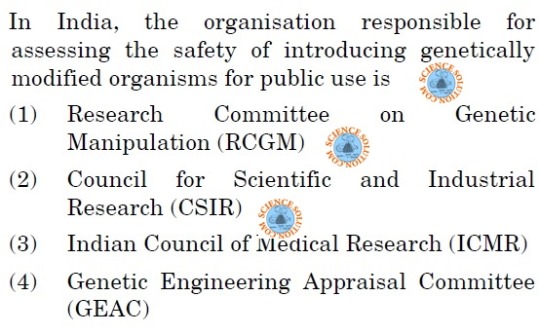
#india#organisation#science#solutions#safety#genetically#organism#research committee#genetic#manipulation#council#industrial#research#medical#engineering#RCGM#csi siblings#ICMR#GEAC
1 note
·
View note
Text
In the spring and summer of 2023, Senate Bill 403, which sought to add caste as a form of ancestry protected from discrimination, was making its progress through California’s legislative process. It was watched closely by the state’s 2 million people of South Asian descent, with Ambedkarite activists backing the effort and Hindutva groups opposing it. On 11 September 2023, SB 403 was sent to the governor’s office after receiving near-unanimous support in both the state assembly and senate. A few days later, the California governor, Gavin Newsom, went to Chicago to attend a meeting with donors to a political-action committee working on President Joe Biden’s re-election campaign. There, he met Ramesh Kapur, who runs a Massachusetts-based company manufacturing medical equipment as well as the US–India Security Council, a lobbying organisation. Kapur has been involved in fundraising for candidates of the Democratic Party since 1983, when he helped elect the future presidential nominee Michael Dukakis to a second term as Massachusetts governor. “If you want to be our next president, veto the bill,” Kapur told Newsom, according to Harper’s Magazine. Newsom did so on 7 October, sending Kapur an email hours before he issued the veto.
Every day I learn one new evil fact about gavin newsom
#the libs having to stop libbing out over every cartoon villain with a symmetrical smile#hindutva#indian politics#us politics
183 notes
·
View notes
Text
Unpunished evil returns and grows stronger in its impunity

"13 houses in the residential area were damaged during the rocket attack, the houses have five floors. There is a very large number of broken windows, over 700. Seven humanitarian buildings were damaged," said Kateryna Yamshchikova, Secretary of the Poltava City Council, about the consequences of the missile attack in Poltava on June 17.
Utilities and rescuers are working at the site. They are trimming damaged trees and removing balcony structures. Social workers and psychologists are also assisting.
Also, Vadym Labas briefly explains why certain countries that arrived at the Global Peace Summit in Switzerland did not sign a joint declaration.
▪️ Saudi Arabia is a major hub for the transfer of components and units for Russian weapons, as well as a place of accumulation of billions of Russian money. ▪️ India - supplies units and components to Russia. It has joint military-industrial complex plants with Russia, from assault rifles to missiles. It is a hub for transshipment of Russian oil. ▪️ South Africa - everything is clear here: "Wagner", money and influence. ▪️ Thailand - supplies sanctioned products to Russia and also helps the Russian military-industrial complex with its production. For example, Russia could not produce cable products without Thailand. ▪️ Indonesia - supplies sanctioned products to Russia. ▪️ Mexico is a huge hub for the supply of drugs to Europe and Russian agents to the United States, which generates huge shadow earnings. ▪️ United Arab Emirates - helps to supply sanctioned products to Russia and has a lot of Russian money. ▪️ Armenia - has a huge Russian lobby and is one of the key players in the supply of smuggled military-industrial products to Russia.
All this brings super-profits either to these countries themselves or to influential clans in these countries. Therefore, they are quite satisfied with the current situation.
P.S.: these countries came to the Summit to "keep their finger on the pulse," but they are not interested in peace in Ukraine because they make super profits by helping Russia circumvent sanctions and supplying components. But if they were given a clear signal about the secondary sanctions that could be imposed for helping Russia, their "pulse rate" would increase significantly.
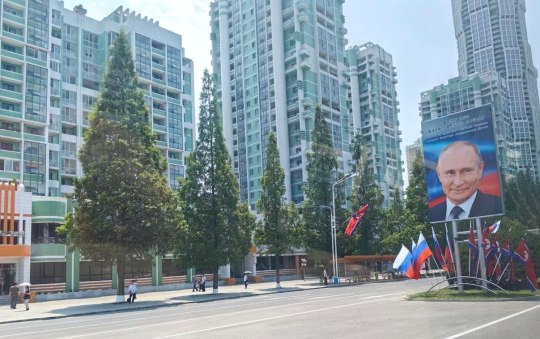
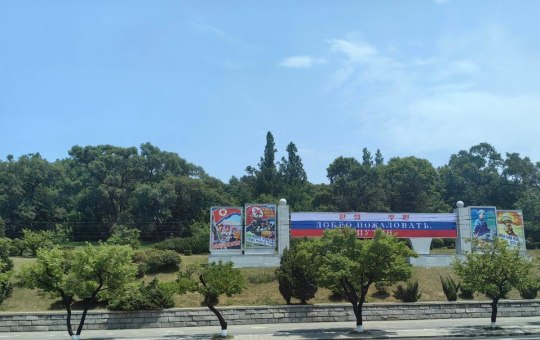
DPRK prepares for the arrival of the world's evil.
Now the most important news: The ratio of forces in the Pokrovsk sector is 1 to 7 in favor of the Russians, said a soldier of the 47th Brigade, pseudonym "Azimuth".
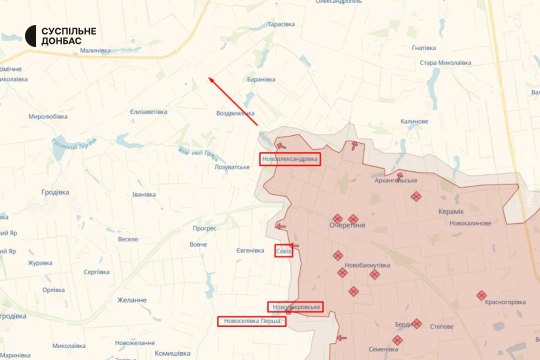
Photo: Approximate front line in the Pokrovsk sector/DeepStateMap.
The Russians are pressing near the villages of Novoselivka Persha, Sokil, and Novopokrovske, trying to reach the Pokrovsk-Konstantynivka highway.
Don't be indifferent. Make Russia pay. Please hear our cry out to the world, keep spreading our voices, and donate to our army and combat medics (savelife.in.ua, prytulafoundation.org, Serhii Sternenko, hospitallers.life, ptahy.vidchui.org, and u24.gov.ua).
#ukraine#poltava#donetsk#genocide#stop the genocide#russia is a terrorist state#russian invasion of ukraine#russo ukrainian war#make russia pay#russia must burn#war in ukraine#current events#world news#important#signal boost#stand with ukraine#donate if you can#please donate#donations#український tumblr#український тамблер#arm ukraine
38 notes
·
View notes
Note
Thank you for considering my message.
Here's what everybody needs to know about young doctor's rape case -
https://timesofindia.indiatimes.com/city/kolkata/pgt-doctor-found-dead-at-rg-kar-medical-college/articleshow/112415633.cms
Here's the summary -
Her dad found her naked, lying
motionless on the floor with a broken
pelvic girdle, disfigured limbs and
shattered pieces of glasses in her eyes,
bleeding incessantly.
Her plight in those
final minutes is unimaginable. Her
parents were denied any contact with her
dead body for 3 hours after they reached
the crime scene. 150 gm of semen was
found in her body, one man can only
have 15 gm. A scapegoat is in custody.
Dean said she was psychotic. After the
transfer to CBI, renovation work started
in the hospital. At this point it's not just
a doctor issue anymore, it's just
inhumane. We keep unlocking lower
levels of inhumanity year after year.
#Stop crimes against women !!!!!
Please support the doctor's fraternity of India to help our fellow doctor get the desired justice because common people are silent on this case but being woman We expect support from all women atleast because the worst part is even our medical council isn't allowing us to protest peacefully considering our protests to be keeping medical care of common people at stake . So the social media is our last string of hope .
Thank you !!
here’s the link but pls keep spreading!!
25 notes
·
View notes
Text
MALARIA VACCINE
The Government of India has set a target to eliminate malaria in India by 2027.
It has developed a National Framework for Malaria Elimination (2016-2030) and a National Strategic Plan for Malaria Elimination for five years.
India shifted its focus from malaria control to elimination.
A roadmap was established to eliminate malaria in 571 out of India’s total 678 districts by 2022.
The Malaria Elimination Research Alliance-India (MERA-India) was formed under the Indian Council of Medical Research (ICMR).
The subject of "Malaria Vaccine" is covered in this article's coverage of "Daily Current Affairs". The Science and Technology segment of the UPSC CSE test has applicability for this topic. Rishabh has researched and written the article. Additionally, our faculty has reviewed this article. Click the “Malaria Vaccine” link to see the story's original version.
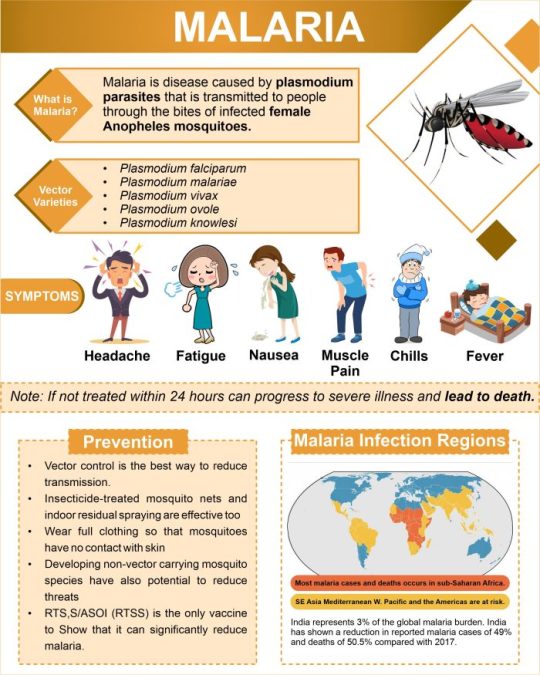
Plutus IAS has received praise for its continued success in offering top-notch and reasonably priced IAS coaching in Karol Bagh Delhi. Our students' everlasting gratitude proves our dedication to developing the next generation of Indian bureaucrats and administrators.
The importance of everyday current affairs cannot be overstated if you wish to succeed in competitive tests like Civil Services. On its website, Plutus IAS includes a separate section for current affairs.
#ias coaching in delhi#upscaspirants#upsccoaching#best ias coaching in delhi#civil services examination#ias#upsc exam preparation#education#iascoaching#plutus ias#malaria vaccine
60 notes
·
View notes
Text
2 notes
·
View notes
Text
Advance Your Expertise: Premier FRCR Training in India
Become an FRCR-Certified Radiologist with Texila’s Expert Training!
High Demand for Radiologists in India
The demand for radiologists in India is soaring, creating numerous career opportunities in the field. With advancements in medical imaging and diagnostics, skilled radiologists are crucial for accurate disease detection and treatment planning.
FRCR Training in India: Prepare Efficiently
Texila offers a comprehensive FRCR (Fellowship of the Royal College of Radiologists) training program designed to prepare candidates efficiently for the Royal College of Radiologists exam. This structured training ensures a thorough understanding of radiological practices, paving the way for a successful career in radiology.

FRCR Clinical Premier Training
Our FRCR Clinical Premier Training is tailored to help radiologists achieve world-class standards. The program includes detailed clinical sessions and expert guidance, enabling participants to excel in the FRCR exam and gain international recognition.
Easiest GMC Registration
Texila’s FRCR course simplifies the GMC (General Medical Council) registration process, making it easier for aspiring radiologists to get certified and practice with confidence in India and beyond.
Comprehensive Support and E-Learning Solutions
Benefit from Texila’s supportive faculty and cutting-edge e-learning solutions. Our online platform provides flexible learning options, allowing you to study at your own pace while receiving expert support.
Structured FRCR Radiology Course
Enroll in Texila’s FRCR Radiology Course India to receive structured and effective training. Our program covers all aspects of FRCR Radiology Training, ensuring that you are well-prepared for both theoretical and practical components of the exam.
Become a certified radiologist with Texila’s expert FRCR Coaching in India and unlock a promising career in radiology today!
2 notes
·
View notes
Text
MBBS and MD/MS Admissions in India: Your Pathway to a Medical Career

India is one of the most sought-after destinations for medical education, particularly MBBS and postgraduate medical studies like MD/MS. With a vast array of medical colleges, advanced infrastructure, and affordable tuition fees, India attracts students from across the globe, especially through NRI and management quota admissions. This guide provides an overview of the MBBS and postgraduate medical study opportunities in India, focusing on MD/MS admission, NEET PG, NRI quota, and management quota admissions.
1. MD/MS Admission in India
MD (Doctor of Medicine) and MS (Master of Surgery) are postgraduate degrees that allow MBBS graduates to specialize in their chosen medical fields. Admission to these programs in India is primarily based on NEET PG scores, a national-level examination that all aspiring postgraduate medical students must take.
Eligibility for MD/MS Admission
Completion of an MBBS degree from a recognized medical college.
Completion of a 12-month rotating internship.
A valid NEET PG score, which determines eligibility for admission into top medical colleges.
India has several prestigious medical colleges like AIIMS, JIPMER, and private institutions where students can apply for MD/MS courses. The quality of education, research facilities, and clinical exposure offered by these institutions makes them highly desirable.
2. NEET PG Admission in India
The NEET PG (National Eligibility cum Entrance Test Postgraduate) is the gateway for students looking to pursue MD/MS in India. Conducted annually by the National Board of Examinations (NBE), NEET PG is essential for admission to both government and private medical colleges.
NEET PG Admission Process
Register: Candidates must register for NEET PG through the official NBE website.
Appear for the Exam: The exam tests candidates on various medical subjects studied during the MBBS program.
Counseling: Based on the scores obtained, students participate in counseling sessions where seats are allotted in different medical colleges.
Allotment of Seats: After counseling, candidates are granted admission into MD/MS programs in their preferred colleges based on their rank and availability of seats.
NEET PG opens doors to a wide array of specialties in medicine, offering students the opportunity to specialize in their fields of interest.
3. NRI Quota Admission in India
For foreign students or Indian nationals residing abroad, India offers NRI quota admissions in various medical colleges. NRI quota seats are reserved for students who meet specific criteria, such as holding an NRI status or sponsorship by a relative who is an NRI.
Benefits of NRI Quota Admission
Increased chance of securing admission in reputed medical colleges without intense competition.
The option to study at top institutions without having to participate in the general merit list.
Access to world-class medical education in India at affordable rates compared to other countries.
NRI quota admissions are particularly beneficial for those looking to bypass the fiercely competitive general admission process in India.
4. NRI Quota Admission in MBBS
MBBS is one of the most sought-after undergraduate medical programs in India, and NRI quota admissions offer an excellent pathway for overseas students to enroll in Indian medical colleges. Every year, a certain number of MBBS seats are allocated for NRI students in both government and private medical colleges.
Application Process for NRI Quota Admission in MBBS
Eligibility: Applicants must have completed 12 years of schooling, preferably with Physics, Chemistry, and Biology as core subjects.
NEET UG Scores: NRI candidates are required to appear for NEET UG and score a minimum qualifying percentile to be eligible for admission.
Seat Allocation: NRI seats are allotted through a centralized counseling process conducted by the Medical Council of India (MCI) and respective state bodies.
The NRI quota significantly eases the admission process for foreign nationals, offering them access to India’s top medical education institutions.
5. Management Quota Admission in MD/MS
Medical colleges in India also offer management quota admissions for postgraduate courses like MD and MS. Management quota seats are usually available in private medical colleges, and the selection process is relatively more flexible compared to government institutions.
Eligibility for Management Quota Admission in MD/MS
A valid MBBS degree from a recognized university.
Completion of the mandatory internship.
NEET PG qualification is typically required, but the cutoff is often lower for management quota seats.
Management quota admission offers students an alternative route to secure their seats in top medical colleges, especially if their NEET PG rank does not meet the general or state quota criteria.
2 notes
·
View notes
Text
The Role of a Nurse in Palliative Care
Palliative care nursing is a noble and critical profession. As a nurse in this field, you’re not only a caregiver but also a confidant and advocate for patients and families navigating the complexities of life-limiting illnesses. This article explores the role of a nurse in palliative care, focusing on essential aspects, related responsibilities, and key qualifications. Whether you’re already in…
#BSc Nursing#Care#care plan#Critical Care#Demand#education#emotional support#Experience#Family#growth#healthcare#India#Indian Nursing Council#Management#medication#Medications#nursing#Oncology#opportunities#Pain#Patients#professional development#Qualifications#RN#skills#Support#Symptoms#training#Treatment#Treatment Options
0 notes
Text
FMGE Exam 2024
The Medical Council of India Screening Test, also known as Foreign Medical Graduates Examination (FMGE), is a licensure exam conducted by the National Board of Examinations (NBE) in India. This exam is one of the mandatory requirements for an Indian citizen who has a medical degree from a college outside India to practice medicine in the country.
The screening test was introduced in 2002 as a qualifying exam for Indian students who received their medical degrees from countries other than India such as the former Soviet Union, Eastern European countries, China, Nepal, the Philippines, and the Caribbean countries.
Indian doctors who possess fundamental medical degrees from the above countries are required to undertake the MCI screening examination.
2 notes
·
View notes
Text
Holidays 8.21
Holidays
Actuaries Day (India)
Appreciation Day (Elder Scrolls)
Aquino Day (Philippines)
Argonian Day
Ask Questions Day
Bitcoin Infinity Day
Black Indie Authors Day
Buhe (Ethiopia)
Bunny Day (Japan)
Cadillac Day
Crazy Day
Eagle Scout Day
821 Day (Texas)
Festival of Goliath, Parade of Giants begins (Ath, Belgium)
Fête de la Jeunesse (a.k.a. Youth Day; Morocco, Western Sahara)
Good Roads Day
Gospel Day (Micronesia)
Grandfather and Grandson’s Day (Argentina)
ICBM Day
International Day of Mosques
International Day of Remembrance of and Tribute to the Victims of Terrorism (UN)
Internet Self-Care Day
Kosrae (Gospel Day; Micronesia)
National Brazilian Blowout Day
National Dreams Are Possible Day
National Fentanyl Prevention and Awareness Day
National Meme Day
National Report Upcoding Fraud Day
National Senior Citizens Day
Ninoy Aquino Day (Philippines)
Officer’s Day (Russia)
Order of the Lone Star Day
Our Lady of Knock
Poet's Day
San Martin Day (Argentina)
Senior Citizens' Day
Six-Row Barley Day (French Republic)
Thiruonam (Parts of India)
World Entrepreneurs’ Day
World Fashion Day
World Goat Day
Youth Day (Morocco)
Food & Drink Celebrations
Beer Institute Day
Grog Day
National Shiraz Day (Australia)
National Spumoni Day
National Sweet Tea Day
Independence & Related Days
Hawaii Statehood Day (Original Date; 1959)
Latituda (Declared; 2006) [unrecognized]
Latvia (Passing of the Constitutional Law on the Status of the Republic of Latvia as a State and Actual Restoration of the Republic of Latvia; 1991)
3rd Wednesday in August
Hump Day [Every Wednesday]
JUVEDERM Day [3rd Wednesday]
Miss Crustacean Hermit Crab Beauty Pageant and Hermit Crab Races (Ocean City, NJ) [3rd Wednesday]
National Medical Dosimetrist Day [3rd Wednesday]
Wacky Wednesday [Every Wednesday]
Wandering Wednesday [3rd Wednesday of Each Month]
Website Wednesday [Every Wednesday]
Wiener Wednesday [3rd Wednesday of Each Month]
Festivals Beginning August 21, 2024
Corn Palace Festival (Mitchell, South Dakota) [thru 8.25]
gamescom (Cologne, Germany) [thru 8.25]
The Great New York State Fair (Syracuse, New York) [thru 9.2]
Hythe Venetian Fete (Hythe, United Kingdom) [thru 8.21]
Idaho County Fair (Cottonwood, Idaho) [thru 8.24]
Pluk de Nacht Film Festival (Amsterdam, Netherlands) [thru 8.31]
Ransom County Fair (Lisbon, North Dakota) [thru 8.25]
Reading and Leeds Festivals (Leeds and Reading, United Kingdom) [thru 8.25]
Tønder Festival (Tønder, Denmark) [thru 8.24]
Victoria Fringe Theatre Festival (Victoria, British Columbia, Canada) [thru 9.1]
Feast Days
Abraham of Smolensk (Eastern Orthodox Church)
Albert Irvin (Artology)
Amontons (Positivist; Saint)
Apologise Day (Pastafarian)
Asher Brown Durand (Artology)
Aubrey Beardsley (Artology)
Bernard Ptolemy, Founder of the Olivetans (Christian; Saint)
Blessing Against Jealousy Day (Celtic Book of Days)
Bonosus and Maximilian (Christian; Martyrs)
Broderick Crawford Day (Church of the SubGenius; Saint)
Christian Schad (Artology)
Consualia (Ancient Roman festival to the god of the harvest and stored grain)
Euprepius of Verona (Christian; Saint)
Festival of Consus (God of Good Council; Ancient Rome)
Heraclia (Celebration of Hercules; Ancient Rome; Everyday Wicca)
Jane Francis de Chantal (Christian; Saint)
Jean-Baptiste Greuze (Artology)
Joseph (Muppetism)
Jules Michelet (Writerism)
Luxorius, Cisellus and Camerinus (Christian; Martyrs)
The Magic of Lemon Day (Starza Pagan Book of Days)
Maximilian of Antioch (Christian; Saint)
Menashe Kadishman (Artology)
Narcisse-Virgile Díaz de la Peña (Artology)
Nathaniel Everett Green (Artology)
Our Lady of Knock (Christian; Saint)
Pius X, Pope (Christian; Saint)
Radish Tordia (Artology)
Richard, Bishop of Andria (Christian; Saint)
Robert Stone (Writerism)
Sidonius Apollinaris (Christian; Saint)
Stephen Hillenburg (Artology)
Lucky & Unlucky Days
Prime Number Day: 233 [51 of 72]
Shakku (赤口 Japan) [Bad luck all day, except at noon.]
Tycho Brahe Unlucky Day (Scandinavia) [29 of 37]
Umu Limnu (Evil Day; Babylonian Calendar; 39 of 60)
Unglückstage (Unlucky Day; Pennsylvania Dutch) [22 of 30]
Premieres
Ain’t Misbehaving’, recorded by Fats Waller (Song; 1938)
American Ultra (Film; 2015)
An American Werewolf in London (Film; 1981)
Axe Me Another (Fleischer Popeye Cartoon; 1934)
Bambi (Animated Disney Film; 1942)
Be Here Now, by Oasis (Album; 1997)
Between Meals: An Appetite for Paris, by A.J. Liebling (Memoir; 1959)
Blade (Film; 1998)
A Brief History of Time (Documentary Film; 1992)
Crazy, recorded by Patsy Cline (Song; 1961)
Diesel and Dust, by Midnight Oil (Album; 1987)
Dirty Dancing (Film; 1987)
Dynamite, by BTS (Song; 2020)
Earth Abides, by George R. Stewart (Novel; 1949)
Eve of Destruction, by Barry McGuire (Song; 1965)
Facelift, by Alice In Chains (Album; 1990)
Fireman’s Brawl (Fleischer/Famous Popeye Cartoon; 1953)
First Monday in October (Film; 1981)
House of the Dragon (TV Series; 2022)
How You Remind Me, by Nickelback (Song; 2001)
Inglorious Basterds (Film; 2009)
Kiko and the Honey Bears (Terrytoons Cartoon; 1936)
Life with Fido (Terrytoons Cartoon; 1942)
Little Nemo: Adventures in Slumberland (Animated Film; 1992)
Motörhead, by Motörhead (Album; 1977)
Next Stoop Wonderland (Film; 1998)
Ready or Not (Film; 2019)
Ritual de lo Habitual, by Jane’s Addiction (Album; 1990)
Run, Run, Sweet Road Runner (WB MM Cartoon; 1965)
Sherman Was Right (Terrytoons Cartoon; 1932)
A Sunbonnet Blue (WB MM Cartoon; 1937)
The Wings of the Dove, by Henry James (Novel; 1902)
Wrongfully Accused (Film; 1998)
Today’s Name Days
Pius (Austria)
Agaton, Pio, Sidonija (Croatia)
Johana (Czech Republic)
Salomon (Denmark)
Sven, Sveno (Estonia)
Soini, Veini (Finland)
Christophe, Grâce, Ombeline (France)
Pia, Oius, Maximilian (Germany)
Hajna, Sémuel (Hungary)
Cristoforo, Pio (Italy)
Janīna, Linda, Sidnejs (Latvia)
Gaudvydas, Joana, Kazė, Kazimiera, Medeinė (Lithuania)
Ragni, Ragnvald (Norway)
Adolf, Adolfa, Adolfina, Alf, Bernard, Emilian, Filipina, Franciszek, Joanna, Kazimiera, Męcimir (Poland)
Jana (Slovakia)
Pío (Spain)
Jon, Jonna (Sweden)
Gianna, Jane, Janelle, Janessa, Janet, Janette, Janice, Janie, Janine, Janiya, Jayne, Shanice, Sheena (USA)
Today is Also…
Day of Year: Day 234 of 2024; 132 days remaining in the year
ISO: Day 3 of Week 34 of 2024
Celtic Tree Calendar: Coll (Hazel) [Day 19 of 28]
Chinese: Month 7 (Ren-Shen), Day 18 (Ding-Si)
Chinese Year of the: Dragon 4722 (until January 29, 2025) [Wu-Chen]
Hebrew: 17 Av 5784
Islamic: 15 Safar 1446
J Cal: 24 Purple; Threesday [24 of 30]
Julian: 8 August 2024
Moon: 94%: Waning Gibbous
Positivist: 9 Gutenberg (9th Month) [Amontons]
Runic Half Month: As (Gods) [Day 14 of 15]
Season: Summer (Day 63 of 94)
Week: 3rd Full Week of August
Zodiac: Leo (Day 31 of 31)
2 notes
·
View notes
Text
Natural history as the basis for trade and commercial agriculture mediated the link between overseas expansion and the development of European scientific thought. By virtue of its strategic location in the moist tropics, Peninsular Malaysia made a significant contribution to natural history and, thus, to colonial science. [...] Botanical and zoological collections from insular Southeast Asia were of seminal importance, for example, to the pioneer studies of Charles Darwin and Alfred Russel Wallace. [...]
The search for economic produce was actively promoted by both the English and Dutch East India Companies [...]. Modern European plant science had its roots in [...] the creation of physick and, later, botanic gardens, established [...] in Pisa, Padua, Florence, [...] Leiden, Oxford, Cambridge, [...] and Edinburgh. Among other functions, these gardens served, as institutions for training physicians for service in the colonies. The lead role they played in discovering and inventorying plants [...] forged a crucial link between botanic gardens and the quest for products, territory and empire.
Garcia D’Orta (c. 1501/2-68), a Spanish physician who served several viceroys in Goa, established the botanic garden near Bombay [...]. His Aromatum Historia (1563) [...] has been described as ‘a landmark in the history of civilization’. [...]
Hendrik van Rheede’s ground-breaking 12-volume Hortus Malabaricus (1678-1703) [was] based on [...] Ayurvadic knowledge and the services of Ezhava collectors and tree climbers in the Malabar. [...]
---
[T]he connection [Linnaeus] established between natural history and national wealth was widely influential. It struck a cord with Adam Smith (1723-90) and other political economists [...] who placed their faith in agricultural improvement [...]. These developments put a premium on naturalists and [...] Sir Comte de Buffon [...] and Joseph Banks [...] served as agricultural and medical consultants to sovereigns. [...] [T]he concept of environmental determinism informed Adam Smith’s philosophy of the superiority of Western nations, endowed with temperate climes, over the people of the tropics. [...] The person who brokered the link between desire for material wealth and the search for its location and procurement overseas was the indomitable and widely influential [Joseph] Banks, President of the Royal Society (1778-1820) and, from 1773, de facto director of the Royal Botanical Gardens. Also a member of the Privy Council Committee for trade – the organization most directly concerned with augmenting wealth and self-sufficiency -- he used his influence with the Royal Institution and the Board of Agriculture to forge a successful link between science and empire. [...]
Carolus Clusius who held the Chair of Botany in Leiden (1592-9) reputedly obtained ‘Malaysian’ specimens from Sir Francis Drake.
Again, following the death in 1695 of the VOC [Dutch East India Company] botanist, Paulus Hermann, his notes and manuscript [...] were acquired and used by William Sherard (Sherwood), founder of the Chair of Botany in Oxford.
---
In 1778, the English East India Company (EIC) appointed J.G. Koenig, a pupil of Linnaeus, as ‘Professor of Botany and Natural History’ in Madras. [...]
His appointment, believed to have been initiated by Banks, firmly established colonial science within the purview of imperial economic policy. [...]
Koenig worked in the private gardens [...] in Melaka and conducted the earliest and largest botanical survey of the west coast of the Peninsula (1778-9). Bengkulen (Bangkulu), [...] where pepper cultivation was extensively researched, was declared a Presidency [...] with the express aim of developing its full economic potential. To help fulfill this objective, Philip and Charles Miller, sons of the well-respected gardener at the Chelsea Physick Garden, were engaged as botanists [...] Charles Miller was entrusted in ‘the greatest secrecy’ with the experimental planting of nutmeg and cloves, using seedlings that visiting Bugis traders were encouraged to smuggle from Maluku. [...] [T]he EIC envisaged expanding the range of Benkulen’s exports by the introduction of tea, ginger, turmeric and mulberries. [...] These efforts prefigured experiments in spice cultivation at the Calcutta Botanic Gardens [...].
Newbold took his knowledge of the tropical environment in the [Malayan] Straits Settlements to Madras, where he earned a reputation as a naturalist and an Orientalist [...]. His lecture to the Bengal Asiatic Society in 1846 [...] was hugely influential and put the Peninsula at the heart of the emerging discourse on tropical ecology. [...] [T]hose [tropical botanic gardens] established by the EIC in Penang (1794) and Singapore (1822) were integral to its commercial aims for extending the chain of ‘tropical Edens’. As centres for the [...] assemblage of exotic crops [...], botanic gardens were perceived as symbols of scientific progress and imperial might.
---
All text above by: Jeyamalar Kathirithamby-Wells. "Peninsular Malaysia in the context of natural history and colonial science." New Zealand Journal of Asian Studies Volume 11 Number 1. June 2009. [Bold emphasis and some paragraph breaks/contractions added by me.]
#abolition#ecology#imperial#colonial#indigenous#multispecies#landscape#temporality#intimacies of four continents#tidalectics#archipelagic thinking#victorian and edwardian popular culture#haunted
13 notes
·
View notes
Text
I can't reblog it for some reason, but regarding a thread about how awful Mao is and how his policies killed a hundred billion people, I think this is significant.
---
DETROIT — Another country that once had an addiction problem—one that lasted for almost 200 years and involved an incredible 25 per cent of its population—is China.
Today China is virtually drug‐free— and the methods the Chinese used to eradicate their addiction problem might well offer methods we could use to achieve the same results.
China was forced into addiction by the Opium Wars. Contrary to popular belief, these wars—from 1839 to 1842 —did not originate because China wanted to export opium. They began when China resisted England's demand to import opium in exchange for Chi nese products—mostly tea, silk, and porcelain. China lost these wars, and among other indignities was forced to exchange its goods for opium. As a result it became a highly narcoticized country, a victim of ruthless Western economic and political policy. By 1850 an entire fifth of the revenue of the British Government of India — the source of opium — came from Chinese consumption of this drug.
Obviously to enlarge the market for opium, China was forced to create a huge number of addicts. And it did.
In October of 1949 the People's Re public of China was proclaimed. With in a year the Communist Government instituted a comprehensive program designed to eliminate this threat to the nation. All evidence indicates that by 1953 the problem of narcotic drug abuse was practically eliminated.
One important factor was the changed ideology of the young people —no new supply of addicts was forth coming. The changes in outlook in cluded a redefinition of the nation and its youth, of their worth and role. In rural areas this new definition was based on land distribution; collective farming; new educational, social, and vocational opportunities; and the elec tion of local councils. In the cities it took the form of nationalization of commerce and industry, full employ ment, worker control, and the end of foreign domination.
This total ideological transformation of the younger generation was accom panied by the reintegration of Chinese society through small street commit tees that offered cultural leadership.
Equally significant in the Chinese drive to eliminate narcotic addiction were its methods of plugging the source, China is 80 per cent rural, and an unknown but significant part of the land had been turned into poppy cul tivation. The first major economic and political mass campaign of the Gov ernment was land reform, and this aim was coordinated with elimination of poppy growth. Distribution of land from large landholders to landless peasants was accompanied by the need to convert the opium cash crops to badly needed food crops. Today China produces enough opium to meet its medical needs, but no more.
Smuggled opium was still a source of the drug, and China acted to stop this supply with a policy of “carrot and stick.” Leniency was recom mended for employes and workers of opium traffickers; but heavy penalties existed for those controlling the traf fic, manufacture, or growth of opium.
China's attitude toward the individ ual reformed addict was one of good willed congratulations, and represents another important reason why the nar cotic problem was overcome. The re habilitation of opium addicts began with their registration. Arrangements by city‐wide antiopium committees for addict rehabilitation included treat ment to break the habit at home, in clinics and in hospitals.
At every stage of personal rehabili tation the ideological motivation was stressed. Given China's attitudes, this ideology was strong on political, so cial, and economic information. But the important thing is that the anti drug campaign recognized that the de sire and will of the addict is ultimately the controlling factor of addiction. China's policy was not simply to de prive a person of drugs, but to replace the need for narcotics with a forceful, national commitment. Equally signifi cant, the former addict was fully ac cepted back into Chinese life without official stigma or prejudice.
Naturally, many questions have to be answered about the total success of the Chinese experience. Is there an addict population living in labor camps or prisons because of failure to re habilitate? Do the rehabilitated addicts all function as useful members of Chi nese society? To what extent would addiction be a problem in China if its internal and border controls were less stringent? Does traditional Chinese medicine offer useful ideas about ad diction treatment?
---
Wikipedia puts the census count in 1950 at 546,815,000, and a quarter of that is 136,703,750. So about that many people saved from opium addiction by the Communists.
I wonder if that's the reason the West wants to focus so much on the famine.
16 notes
·
View notes